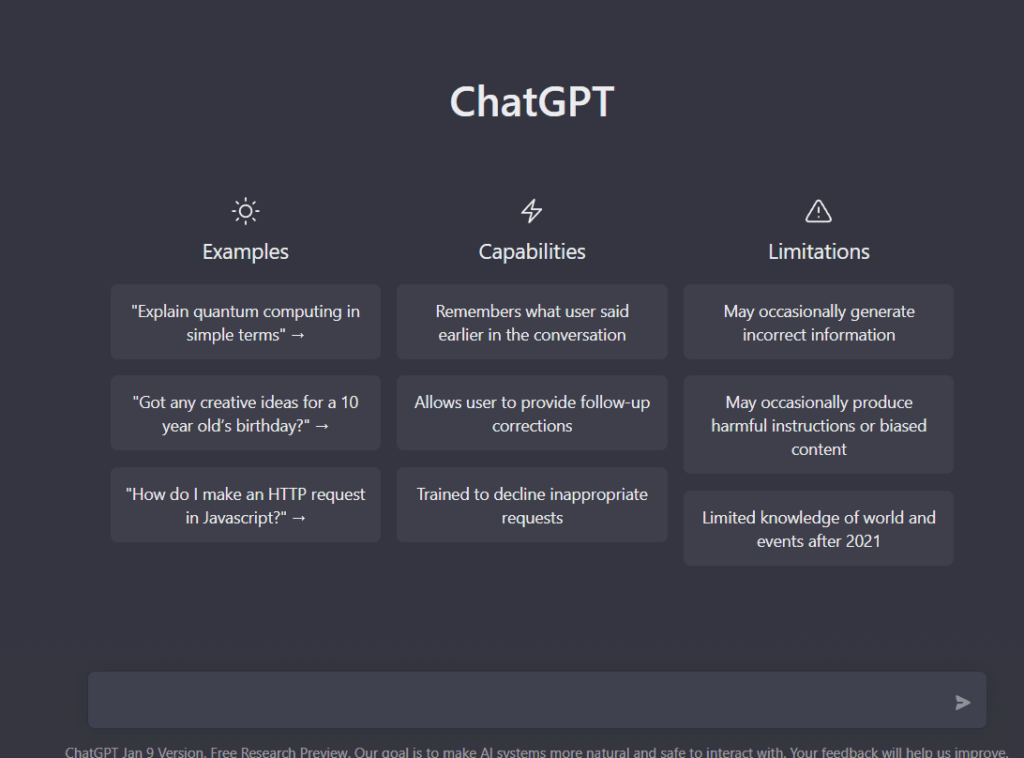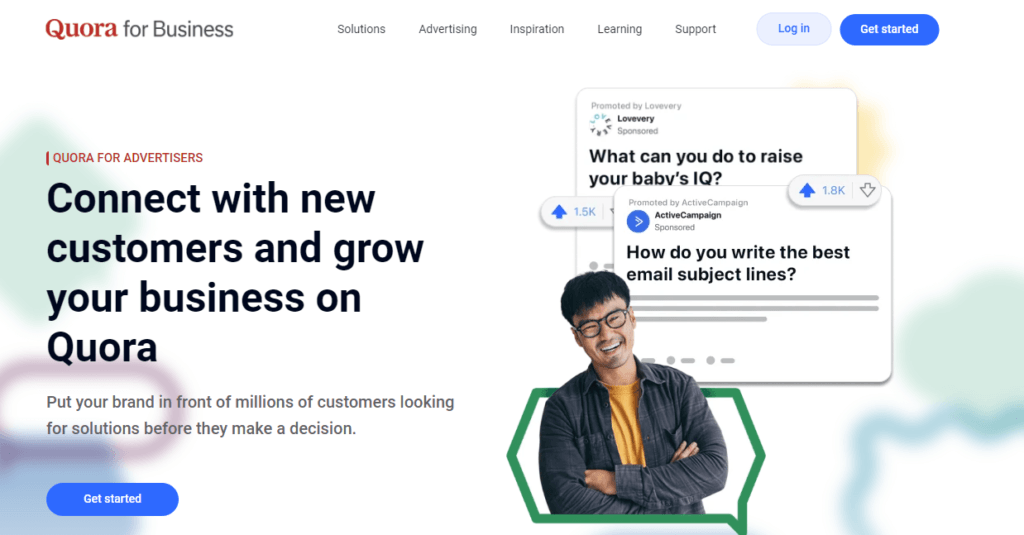ChatGPT is a language model developed by OpenAI, a research company based in San Francisco. The first version of ChatGPT was trained on a dataset of conversational text and was released in 2018. The model was trained using a variant of the transformer architecture, which had previously been used to achieve state-of-the-art performance on a wide range of natural language processing tasks.
In 2019, OpenAI released a new version of ChatGPT, called GPT-2, which was trained on a much larger dataset and was able to generate more diverse and coherent text. GPT-2 was able to generate text that was difficult to distinguish from text written by humans, and it generated a lot of interest and concern in the research community.
In 2020, OpenAI released GPT-3 which was the largest model in the series, trained on a dataset of 570GB of text data and capable of performing a wide range of natural language processing tasks with high accuracy and fluency.
ChatGPT models have been used for a variety of natural language processing tasks, including language translation, text summarization, and question answering, and it has been used in various industries such as customer service, content creation, and digital marketing.
OpenAI continues to improve and update the model, and ChatGPT is considered as one of the most advanced language models available today.
ChatGPT is a large language model developed by OpenAI. It is trained on a dataset of conversational text and can be used for a variety of natural language processing tasks such as answering questions, generating text, and engaging in conversation.
How Elon Musk is related to Chatgpt
Elon Musk is one of the co-founders of OpenAI, the research company that developed ChatGPT. However, Elon Musk is no longer directly involved in the day-to-day operations of OpenAI and he stepped down from the board in 2018.

OpenAI was founded in December 2015 by Elon Musk, Sam Altman, Greg Brockman, Ilya Sutskever, Wojciech Zaremba, and John Schulman, with the goal of developing and promoting friendly AI in a way that benefits humanity as a whole. OpenAI has been working on a variety of AI-related research projects, including natural language processing, robotics, and reinforcement learning.
While Elon Musk is not directly involved in the development of ChatGPT, his involvement as a co-founder of OpenAI helped to establish the company and provide resources for the development of the model.
OpenAI’s mission is to ensure that artificial general intelligence (AGI) benefits all of humanity, and Musk has been a vocal advocate for the responsible development of AI. He has spoken publicly about the potential dangers of AI and the need for research to be guided by ethical principles, and OpenAI has been working to develop models that are safe and reliable.

Uses of ChatGPT in the Digital Marketing field:
ChatGPT can be used in digital marketing in a variety of ways, including:
- Content creation: ChatGPT can be used to generate high-quality, unique content for a brand’s website or social media channels.
- Chatbots: ChatGPT can be used to build more advanced chatbots that can have natural and human-like conversations with customers.
- Email marketing: ChatGPT can be used to generate personalized and highly targeted emails for different segments of a brand’s audience.
- Product descriptions: ChatGPT can be used to generate detailed and compelling product descriptions for e-commerce sites.
- Ad copy: ChatGPT can be used to generate high-performing ad copy for various digital advertising platforms.
- SEO optimization: ChatGPT can be used to generate high-quality, optimized content that can help improve a brand’s search engine rankings.
- Customer service: ChatGPT can be used to assist customer service representatives to handle customers’ inquiries and provide automated responses.
Uses of ChatGPT in Creating a website:
ChatGPT can be used in the creation of websites in several ways:

- Content generation: ChatGPT can be used to generate high-quality, unique content for a website, including blog posts, product descriptions, and landing pages.
- Chatbots: ChatGPT can be used to create chatbots that can interact with visitors on a website, answering frequently asked questions and providing customer support.
- Navigation: ChatGPT can be used to generate natural language-based navigation menus and search functionality, making it easier for visitors to find what they’re looking for on a website.
- Personalization: ChatGPT can be used to personalize the content and layout of a website based on a visitor’s behavior, location, and other factors.
- SEO optimization: ChatGPT can be used to optimize website content for search engines, helping to improve the website’s visibility and search engine rankings.
- Landing pages: ChatGPT can be used to generate high-converting landing pages for lead generation and e-commerce campaigns.
- UI/UX design: ChatGPT can assist in the design of the website by generating natural language instructions and labels for buttons and other UI elements.
Uses of ChatGPT in UX/UI
ChatGPT can be used in UI/UX design in several ways:

- Labeling and annotations: ChatGPT can be used to generate natural language labels and annotations for buttons, icons, and other UI elements, making them more intuitive and user-friendly.
- Error messages: ChatGPT can be used to generate more helpful and user-friendly error messages, reducing frustration and increasing user satisfaction.
- Microcopy: ChatGPT can be used to generate microscopies such as tooltips, hover text, and other small pieces of text that help guide users through a website or application.
- Interactive tutorials: ChatGPT can be used to generate interactive tutorials that can guide users through new features or functionality, helping them to learn and adopt new features more quickly.
- Testing and validation: ChatGPT can be used to test and validate UI/UX designs by simulating user interactions and providing feedback on the usability and user experience.
- Voice Interface: ChatGPT can be used to generate natural language voice commands for voice-based UI.
- Personalization: ChatGPT can be used to personalize the UI/UX design based on user behavior, location, and other factors.
ChatGPT can help with content writing in several ways:

- Content generation: ChatGPT can be used to generate high-quality, unique text for a wide range of content types, such as blog posts, articles, product descriptions, and more.
- Text completion: ChatGPT can be used to complete text that’s been partially written or provide suggestions for the next sentence.
- Text summarization: ChatGPT can be used to summarize long pieces of text into shorter, more concise versions.
- Text rewriting: ChatGPT can be used to rewrite text to make it more engaging, informative, or SEO-friendly.
- Language Translation: ChatGPT can be used to translate text from one language to another, which can help in creating multilingual content.
- Research Assistance: ChatGPT can be used to assist with research by providing relevant information on a topic and generating citations.
- Personalized content: ChatGPT can be used to generate personalized content based on a user’s behavior, location, and other factors.
- Content optimization: ChatGPT can be used to optimize content for search engines by generating high-quality, optimized content.
Overall, ChatGPT can help content writers save time and effort by automating repetitive or time-consuming tasks and providing new ideas and inspiration.
Future of Chatgpt:
The future of ChatGPT and other large language models is likely to continue to evolve and improve as researchers and engineers continue to develop and refine the technology. Some of the possible future developments for ChatGPT include:

- Increased accuracy and fluency: As more data and computational power become available, ChatGPT and other language models are likely to become even more accurate and fluent in their text generation and other natural language processing tasks.
- Greater specialization: As language models are trained on more specific types of data and for more specific tasks, they will become more specialized and able to perform specific natural language processing tasks with greater accuracy and fluency.
- More realistic conversation: ChatGPT’s ability to engage in conversation is likely to improve as more data and computational power become available, making the model more realistic in human-like conversation.
- More robust understanding of context: ChatGPT and other language models will improve their understanding of context, making them better able to understand and respond to the meaning of text and conversation.
- Greater personalization: As the model learns more about the users and adapts to their specific needs and preferences, it will be able to provide more personalized and relevant responses.
- Integration with other technologies: ChatGPT and other language models will likely be integrated with other technologies, such as computer vision, speech recognition, and natural language understanding, to create more powerful and versatile AI systems.
Overall, the future of ChatGPT and other large language models looks bright, with exciting potential for new applications and advancements in the field of natural language processing.
Conclusion
In conclusion, ChatGPT is a large language model developed by OpenAI that can be used for a variety of natural language processing tasks such as answering questions, generating text, and engaging in conversation. It has been used in various industries such as customer service, content creation, and digital marketing. ChatGPT can assist content writers in saving time and effort by automating repetitive or time-consuming tasks and providing new ideas and inspiration. The future of ChatGPT looks promising, with the potential for increasing accuracy and fluency, specialization, more realistic conversation, a better understanding of context, greater personalization, and integration with other technologies. ChatGPT is not intended to replace search engines like Google, but it can be a valuable tool to enhance the search experience.
[WPSM_AC id=27292]



